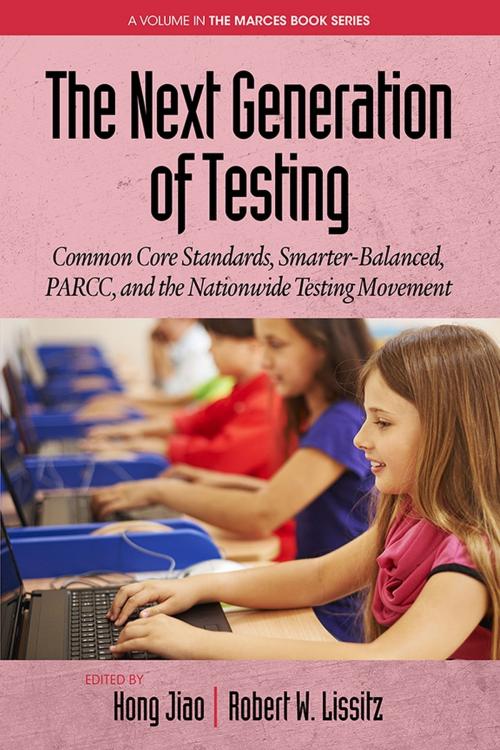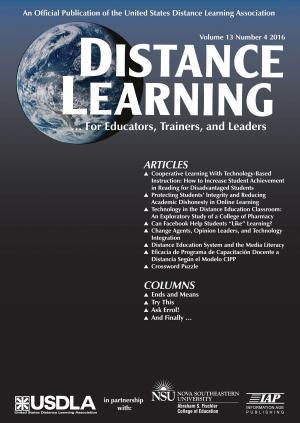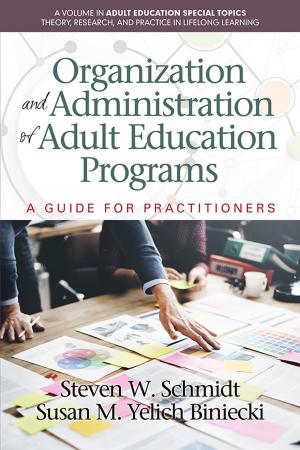The Next Generation of Testing
Common Core Standards, Smarter?Balanced, PARCC, and the Nationwide Testing Movement
Nonfiction, Reference & Language, Education & Teaching, Educational Theory, Evaluation| Author: | ISBN: | 9781681233093 | |
| Publisher: | Information Age Publishing | Publication: | November 1, 2015 |
| Imprint: | Information Age Publishing | Language: | English |
| Author: | |
| ISBN: | 9781681233093 |
| Publisher: | Information Age Publishing |
| Publication: | November 1, 2015 |
| Imprint: | Information Age Publishing |
| Language: | English |
The Race To The Top (RTTP) federal education policy fostered a new generation of state tests. This policy advocated adopting common core standards which set a higher level of learning targets for students in the US K?12 education. These standards are intended to assess higher order thinking skills and prepare students ready for college and career. In the meantime, they are aligned with those for international assessments which keep US students abreast of their international peers. Furthermore, the new generation of state tests requires the use of technology enhanced items to align student assessments with student learning environment. Computer technology is indispensable to accomplish this goal. Computer based tests related to common core standards are different from previous state computer based tests in two important aspects, one is that the current version requires accurate assessment of students along all ability levels and the other is that it promotes the use of an efficient test delivery system, essentially the use of computerized adaptive assessment in K?12 state testing programs. In addition to providing summative information about student learning, the new common core tests add formative assessment component in the whole assessment system to provide timely feedback to students and teachers during the process of student learning and teacher instruction. As with its predecessor, the new assessment policy also holds teachers and schools accountable for student learning. With the requirements by the new federal education policy, states formed two consortia: Partnership for Assessment of Readiness for College and Careers (PARCC) and Smarter?Balanced Assessment Consortium (SBAC) to develop assessments in alignment with the new common core standards. This book is based on the presentations made at the Thirteenth Annual Maryland Assessment Research Center’s Conference on “The Next Generation of Testing: Common Core Standards, Smarter?Balanced, PARCC, and the Nationwide Testing Movement”. Experts from the consortia and nationwide overviewed the intention, history and the current status of this nationwide testing movement. Item development, test design, and transition from old state tests to the new consortia tests are discussed. Test scoring and reporting are specially highlighted in the book. The challenges related to standard setting for the new test, especially in the CAT environment and linking performance standards from state tests with consortium tests were explored. The issues of utilizing the consortium test results to evaluate students’ college and career readiness is another topic addressed in the book. The last chapters address the critical issue of validity in the new generation of state testing programs. Overall, this book presents the latest status of the development of the two consortium assessment systems. It addresses the most challenging issues related to the next generation of state testing programs including development of innovative items assessing higher order thinking skills, scoring of such items, standard setting and linkage with the old state specific standards, and validity issues. This edited book provides a very good source of information related to the consortium tests based on the common core standards.
The Race To The Top (RTTP) federal education policy fostered a new generation of state tests. This policy advocated adopting common core standards which set a higher level of learning targets for students in the US K?12 education. These standards are intended to assess higher order thinking skills and prepare students ready for college and career. In the meantime, they are aligned with those for international assessments which keep US students abreast of their international peers. Furthermore, the new generation of state tests requires the use of technology enhanced items to align student assessments with student learning environment. Computer technology is indispensable to accomplish this goal. Computer based tests related to common core standards are different from previous state computer based tests in two important aspects, one is that the current version requires accurate assessment of students along all ability levels and the other is that it promotes the use of an efficient test delivery system, essentially the use of computerized adaptive assessment in K?12 state testing programs. In addition to providing summative information about student learning, the new common core tests add formative assessment component in the whole assessment system to provide timely feedback to students and teachers during the process of student learning and teacher instruction. As with its predecessor, the new assessment policy also holds teachers and schools accountable for student learning. With the requirements by the new federal education policy, states formed two consortia: Partnership for Assessment of Readiness for College and Careers (PARCC) and Smarter?Balanced Assessment Consortium (SBAC) to develop assessments in alignment with the new common core standards. This book is based on the presentations made at the Thirteenth Annual Maryland Assessment Research Center’s Conference on “The Next Generation of Testing: Common Core Standards, Smarter?Balanced, PARCC, and the Nationwide Testing Movement”. Experts from the consortia and nationwide overviewed the intention, history and the current status of this nationwide testing movement. Item development, test design, and transition from old state tests to the new consortia tests are discussed. Test scoring and reporting are specially highlighted in the book. The challenges related to standard setting for the new test, especially in the CAT environment and linking performance standards from state tests with consortium tests were explored. The issues of utilizing the consortium test results to evaluate students’ college and career readiness is another topic addressed in the book. The last chapters address the critical issue of validity in the new generation of state testing programs. Overall, this book presents the latest status of the development of the two consortium assessment systems. It addresses the most challenging issues related to the next generation of state testing programs including development of innovative items assessing higher order thinking skills, scoring of such items, standard setting and linkage with the old state specific standards, and validity issues. This edited book provides a very good source of information related to the consortium tests based on the common core standards.















